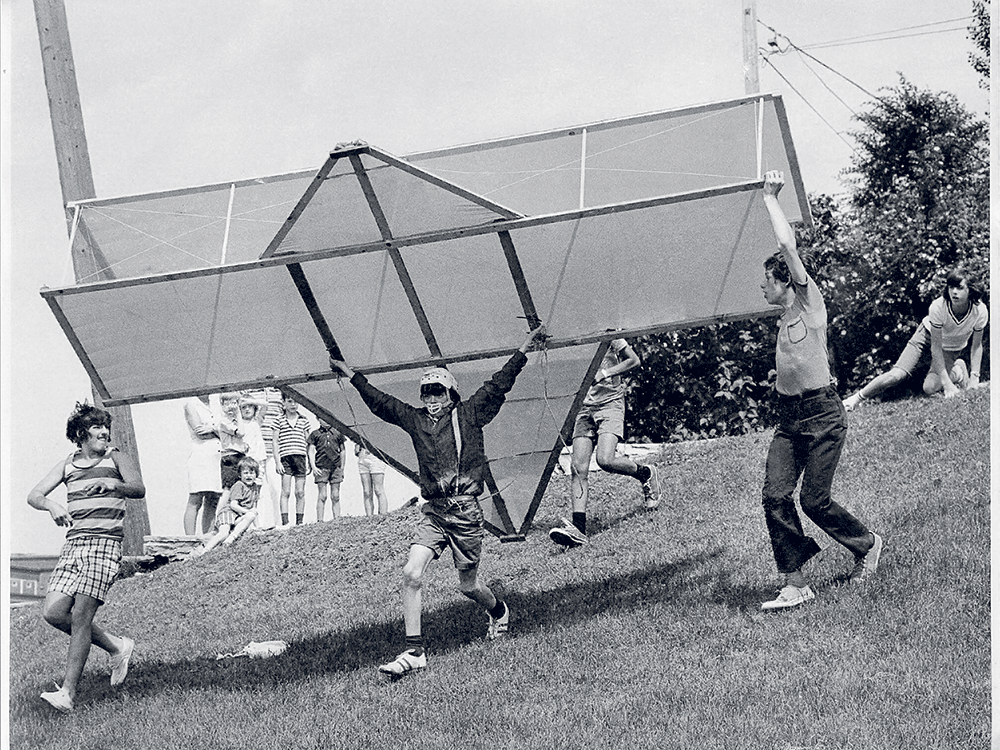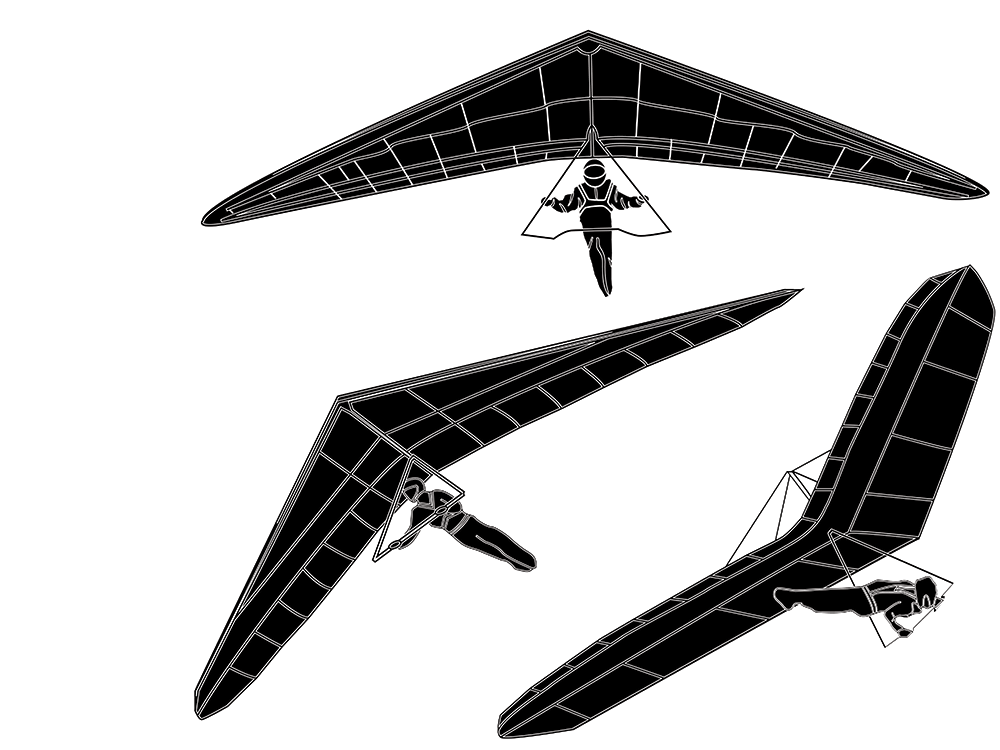
Learning to Fly
As a young boy growing up in Toronto in the 1970s, I was obsessed with all things airborne. Frisbees, parachute-clad toy soldiers and those 69-cent balsa-wood gliders that pushed back the frontiers of fragility. They soared beautifully for about six minutes before disintegrating and returning permanently to the earth. My flight fixation ran deep: I wanted to soar like those gliders—but preferably without the in-flight disintegration part.
When I was 12, I started hanging out with an equally flight-obsessed classmate, Geoff. As rumour had it, he’d tested a homemade parachute by leaping off the roof of his house (and it wasn’t a bungalow). So Geoff and I decided to design and build our own hang-glider—and test-fly it, too.
Our collective knowledge of aerodynamics came exclusively from Roger Ramjet cartoons. To bone up, Geoff and I spent several minutes studiously researching gliders. We carefully noted the classics designed by the Wright brothers and their German competitor, Otto Lilienthal, in the late 19th century. We considered the modern models that dominated the sport of hang-gliding—and then we designed a hang-glider that bore absolutely no resemblance to any of them. We just thought ours looked better.
Next came the most important task: to come up with a cool name. We cycled through all the great soaring birds. The eagle? Too American. The condor? Too ugly up close. The turkey vulture? Um, no.
After a longer deliberation than we’d committed to designing the glider itself, we settled on the Falcon series. Yes, series. An idea this good merited more than one model. We agreed to pool our babysitting money—$21.34 between us—and rode the bus to the lumberyard. I’m sure history is rife with breakthroughs financed by babysitting gigs, but I just can’t think of any right now. We returned home with glue, a box of screws and 100-plus feet of pine one-by-twos.

Time for Takeoff
We built Falcon 1 in my backyard. At school, shop class wasn’t exactly my strong suit, and neither Geoff nor I was familiar with the “measure twice, cut once” maxim, so two more trips to the lumberyard were required before Falcon 1 took shape. My mother even chipped in, sewing blue rayon wing panels.
We introduced two significant innovations in our design. The first was ailerons, or wing flaps, so we could dip and bank in flight. They were activated by levers and string that passed through a maze of pulleys. We were unconcerned that to operate the ailerons, we’d have to let go of the glider. We had a solution for that: the second innovation, a sling seat. Rather than hanging by our scrawny arms, we were to sit in a loop of rope located below the glider’s wings. I wish I was making this up, but I’m not.
Several weeks later, Falcon 1 rested in our backyard. It was as aerodynamic as an anvil and slightly heavier, but to us, it looked like it would fly forever. We hadn’t been shy about our little foray into aviation. The whole school knew about the test flight we’d scheduled in the park down the street. We’d even attracted the attention of the official photographer from the Board of Education (now the Toronto District School Board), who was there to record the momentous flight. Dozens of students, a few teachers and my entire family headed to the launch site. I lost the toss and became the Falcon 1’s inaugural test pilot. Geoff seemed relieved.
I donned my hockey helmet and mouthguard—safety first—and stood at the top of a steep hill. As I hyperventilated and hummed the theme from Rocky, six classmates strained to lift the contraption. Then I was off and running, very nearly buckling under the weight of Falcon 1. When the wind caught the wings, I prepared to climb into the sky and bank to my right to give the photographer the perfect shot. But my feet simply wouldn’t leave the ground, and I collapsed under the glider’s weight.
Strangely enough, three more sprints from the top yielded similar results. Through it all, the photographer happily snapped away, providing an incontrovertible record of Falcon 1’s earthbound test “flights.”
Geoff and I were bruised, but not discouraged. We went on to build Falcon 2 and 3, which, incidentally, were just as airworthy as Falcon 1. The only thing that ever took flight was the unfettered optimism of youth. And we loved every minute of it.
For more from our Department of Wit, check out The Confessions of a Flea-Bitten Feminist!